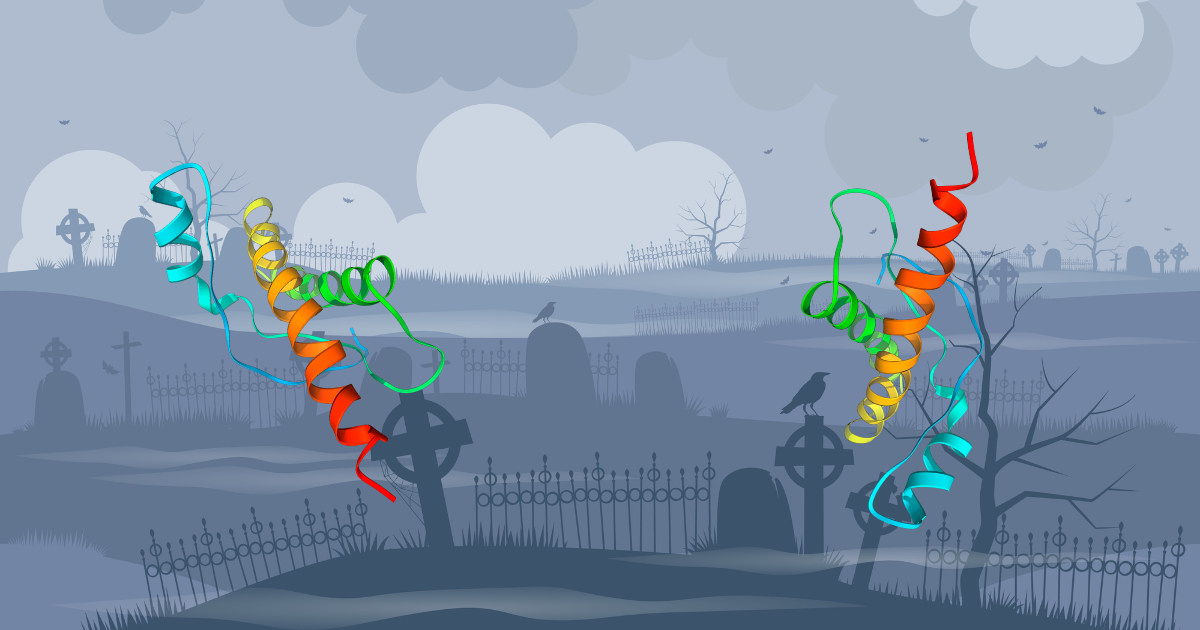Prions: “Immortal Diseases” Enduring Beyond the Grave
Pathogens that stay viable in the environment for decades after the death of their host, opportunistically infecting whoever happens along, may sound like something out of a horror movie, but that’s exactly what prions do.
Capable of passing from the soil to people and animals for upwards of sixteen years and possibly much longer, prions are incredibly resistant to degradation specifically due to their shape. Other pathogens can hang on similarly after the death of their hosts, with lifespans extending months in certain bacterium of tuberculosis (virulent for nearly three months) and some rare viral hemorrhagic fevers (Ebola, Lassa) that can infect others for more than a week. But no virus or bacterium challenges the longevity of prions, which cause Creutzfeldt-Jakob disease and Gerstmann-Sträussler-Scheinker syndrome in humans and Mad Cow and chronic wasting disease in cattle, sheep, elk and deer. There’s even a human version spread through cannibalism.
Misfolded proteins
Prion is the term for a treacherous protein with a structure completely different from what it ought to be. Proper proteins, you will recall, are honorable, essential building blocks of life: proteins are what give us our heart muscle, our blood, our vital organs. Proteins have highly-specific three-dimensional profiles; it is this exactitude of a protein’s shape that gives it its identity. Angularity, precision of detail of form, engenders a protein’s particular powers.
Sounds almost innocuous, then, to speak of misfolding, a word more likely to inspire visions of laundry than reverent dread, but proteins gone wrong take on nefarious abilities. All prions were once common proteins of a type present in most humans and animal cells, but for a number of reasons (oxidative stress, genetic mutation), as they form may take disastrous turns, forming incorrectly. The protein’s structure gets shaped improperly, resulting in a prion instead of the protein that should have been. This prion then goes on to create more like itself, protected be the incorrect shape it has given itself.
The disease moves fast. It’s untreatable and always fatal.
Infection from the soil
Prions may bind to the soil and remain viable, infecting vegetation grown in soil where prion-diseased animals have decomposed; prions can pass through the vegetation to grazing animals, infecting them. Living infected animals meanwhile are moving through the world shedding prions through urine, feces, skin, antler velvet, and saliva.
Ingestion of prions through infected materials, tissues, or meat is one way of contracting the disease from the environment; sometimes livestock have received feed comprised in part of the remains of other infected animals, and contracted the disease this way. For humans — assuming cannibalism is not a factor — proper sanitation is key to avoiding infection where exposure is possible (including consuming meat from exposed livestock).
Destroying prions
There are, of course, many well-established precautions for those in the field of death care who must safely handle infectious remains, such as of those with prion diseases.
Those with the experience will be familiar with the various chemical processes that break down prions effectively, and that application of such methods isn’t practical at scale in the environment.
The safest disposition for infected remains is high-temperature cremation; temperatures above 900 degrees Fahrenheit sustained for several hours will destroy prions.




